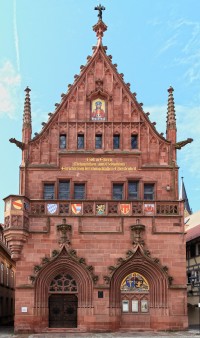Vorderseite: Porträt Melanchthons barhäuptig nach links, unten das Monogramm: W (= Weidanz). Umschrift rechts: PHILIPP MELANCHTHON
Rücksseite: Im sechs Zeilen 1560 / 1960 / MELANCHTHON-EHRUNG / DER DEUTSCHEN / DEMOKRATISCHEN / REPUBLIK
Medailleur: Gustav Weidanz, Halle
en

